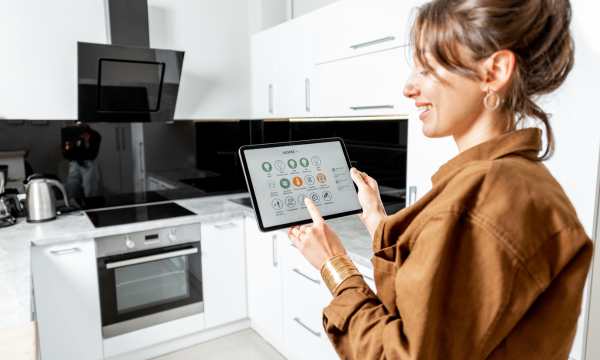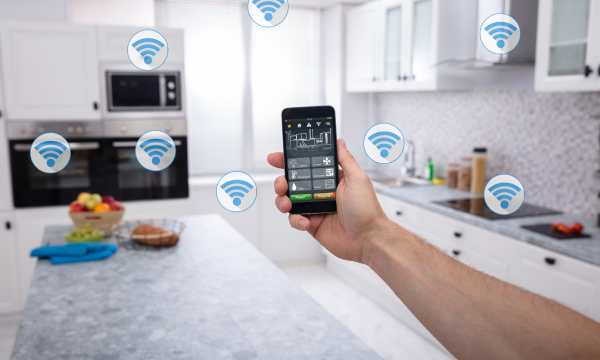Green Living: Energy-Efficient Smart Appliances
With caring for the planet becoming increasingly important, green living has never been more important.
Ad
Adding smart devices that use less energy is a big step towards making our homes greener. These modern gadgets not only make our lives easier but also help us use less energy and reduce our impact on the world. This article discusses the pros and cons of smart devices that use less energy and how they can help you live a greener and more sustainable life.
The Environmental Impact:
Typically, older appliances consume more energy than they need, raising electricity prices and putting more pressure on natural resources. Energy-saving smart gadgets help protect the environment by using cutting-edge technology to improve performance while using minimal energy. By choosing to use these appliances over others, people can help the environment while saving on energy bills.
Ad
Reduce Energy Consumption:
One of the biggest advantages of energy-efficient smart products is that they can significantly reduce energy consumption. Better insulation, motors that consume less energy and smart controls are just some of the features of these machines. For example, a smart refrigerator with sensors can change the temperature of the refrigerator based on its contents and frequency of use. This way, no energy is wasted on unnecessary cooling cycles.
Smart Automation Ensures that Everything Runs More Smoothly:
Smart tools that use less energy are different because they work with smart home technology. These devices can be connected to the internet and people can control and monitor them remotely using apps on their phones. Smart automation ensures that machines only work when necessary, saving energy. For example, a smart heater learns a user’s preferences and adjusts the heating or cooling settings accordingly. This keeps the user comfortable and wastes as little energy as possible.
Innovation Leads to Better Performance:
Devices that use less energy use new technology to make them work better. Sensors, machine learning algorithms and adaptive controls are some of these devices. For example, smart dishwashers can vary water consumption and cycle time based on the amount of load and soil volume. This ensures clean dishes and saves raw materials.
Integration of Renewable Energy:
Some smart products that use less energy have features that work well with renewable energy. These products can be programmed to operate at optimal times for solar or wind energy production. This not only increases the use of clean energy but also reduces the use of traditional fossil fuels, making the energy environment more sustainable.
Long-Term Cost Savings:
Smart tools that use less energy may cost more initially than regular tools, but they can save you a lot of money in the long run. Lower monthly energy bills result from less energy use, allowing homeowners to recoup their initial investment over time. This means that machines that use less energy are not only better for the environment but also better for your wallet.
Examples of Energy-Efficient Smart Appliances:
- Smart Thermostats: Brands like Nest and Ecobee make smart thermostats that learn how to heat and cool your home and change settings based on that information. This not only makes you feel better but also ensures that you use energy efficiently.
- Buy Energy Star Appliances: When purchasing appliances such as refrigerators, washers and dryers, look for the Energy Star label. The Environmental Protection Agency (EPA) has strict rules about how energy efficient a product must be to receive this label.
- Smart Lighting Systems: Automated lighting systems, such as those from Philips Hue or Lutron, can be programmed to turn off lights when no one is in the room or to change colour based on the amount of natural light. This saves energy that could otherwise be used.
- Smart Power Strip: Electronic devices automatically turn off when not in use. This prevents the energy vampire from continuing to take power even when the electronic device is turned off.
Conclusion:
A useful and important way to make the future more sustainable is to live green by using smart tools that use less energy. These tools allow people to make environmentally friendly choices in their homes by reducing energy consumption, improving performance and using renewable energy. While it may cost more initially, switching to smart devices that use less energy is a good investment for the environment and your future money. Let’s embrace these technologies together and move towards a greener and more sustainable lifestyle.
FAQs:
1. What are energy-saving smart devices and how are they different from traditional devices?
Energy-efficient smart appliances use advanced technologies such as improved insulation, energy-saving motors and smart controls to optimise performance and minimise energy consumption. Unlike traditional equipment, these devices are designed to adapt to user preferences and operate more efficiently, reducing energy consumption and environmental impact.
2. How do energy-saving smart devices promote a green lifestyle?
Energy-saving smart devices promote a green lifestyle by significantly reducing energy consumption. Through features such as smart automation and optimised performance, these devices use energy more efficiently, reducing their carbon footprint. The integration of renewable energy further increases its contribution to sustainable development.
3. Are energy-efficient, smart devices more expensive? How do they ensure long-term cost savings?
While the initial cost of energy-efficient smart appliances may be higher than traditional models, the long-term savings are significant. Thanks to lower energy consumption, these appliances can reduce monthly energy bills, allowing homeowners to recoup their initial investment over time. Cost-effectiveness comes from environmental and economic benefits.
4. Can I control energy-saving smart devices remotely? How does this feature improve efficiency?
Yes, energy-saving smart devices can be controlled remotely via smartphone apps. This smart automation feature ensures that devices are only activated when necessary, optimising their energy consumption. For example, smart thermostats can learn user preferences and remotely adjust heating or cooling settings to provide comfort while minimising energy waste.
5. How do you combine energy-saving smart home appliances with renewable energy?
Some energy-efficient smart devices are designed to integrate seamlessly with renewable energy sources. Homeowners can programme these devices to operate during peak times of solar or wind energy production. By maximising the use of clean energy, these devices help create a more sustainable energy ecosystem and reduce dependence on traditional fossil fuels.
 How to Use a Truck GPS App on Android
How to Use a Truck GPS App on Android
Experience the freedom of smart routes and precise navigation with a truck GPS app on Android. Ad […]
More Innovations Unveiled: Overview of Smart Home Appliances
Innovations Unveiled: Overview of Smart Home Appliances
The rapid development of technology has changed our way of life. Ad One of the most exciting […]
More Seamless Living: Smart Home Systems Integration
Seamless Living: Smart Home Systems Integration
In today’s technologically advanced age, the concept of home living has transcended its usual limitations. Ad With […]
More